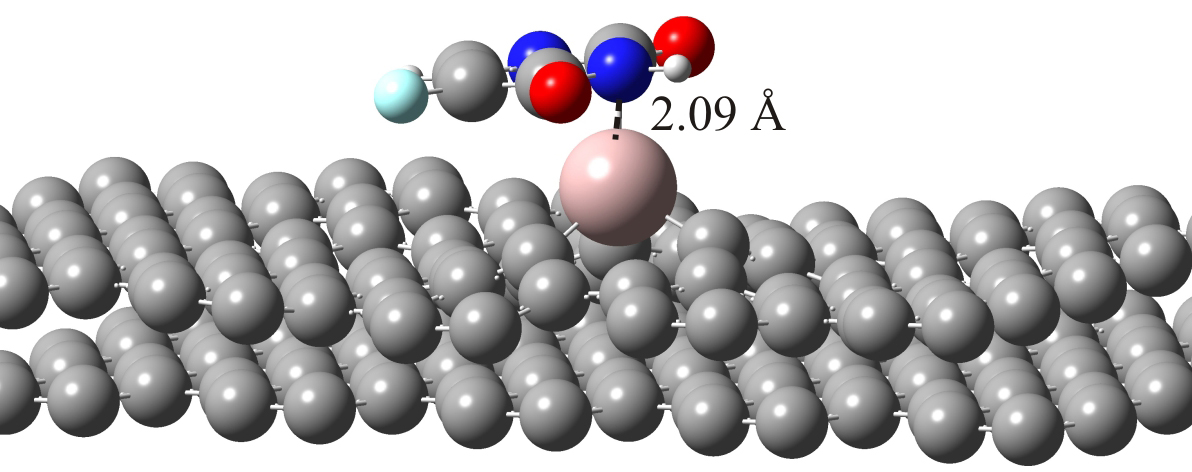EPJ E Highlight - Better chemo drug adsorption onto targeted delivery capsules
- Details
- Published on 18 September 2018

New study demonstrates adsorption of chemotherapy drugs onto active carbon delivery capsule can be enhanced with aluminium atom inclusions
The efficacy of chemotherapy treatment depends on how effectively it reaches cancerous cells. Increasing targeted delivery could mean decreasing side effects. Scientists are enhancing methods of selectively transmitting active chemotherapy agents and reducing their toxicity by encapsulating chemo drugs into active carbon used as the targeted delivery device. In a new study published in EPJ E, Gabriel Román, from the National University of the South, in Bahia Blanca, Argentina, and colleagues have demonstrated that adding minute amounts of aluminium atoms onto activated carbon atoms helps increase the adsorption onto the delivery carbon capsule of a standard chemotherapy drug, called 5-Fluorouracil (5-FU). This drug is typically used for stomach, colorectal, neck and head cancer treatments. This model could lead to more effective and convenient cancer treatments with fewer side effects by encapsulating the chemo drug into the active carbon, so that it can be taken orally.
In this study, the authors examined the adsorption of 5-FU on test surfaces made up of activated carbon alone and a version containing a minute dispersion of aluminium within the activated carbon structure. They relied on molecular modelling simulation to predict and display adsorption configuration and energy changes in the two scenarios.
The authors found that aluminium inclusion increases the adsorption capacity of active carbon. This is because the addition of the metal increases the interactions of the drug with the atoms of the encapsulation material in areas where it is polarised. The electric charges present in some areas of the surface of the drug interact with the charges of the aluminium atoms on the surface of the capsule material. This means they contribute to improving its adsorption properties as less energy is required for the adsorption and the drug is at a shorter distance from the encapsulation material.
G. Román, E. Noseda Grau, A. Diaz Compañy, G. Brizuela, A. Juan, S. Simonetti (2018), A first principles study of pristine and Al-doped activated carbon interacting with 5-Fluorouracil anticancer drug,
Eur. Phys. J. E, 2018, 41:107. DOI: 10.1140/epje/i2018-11718-4




